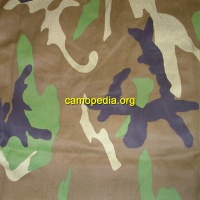Difference between revisions of "Iran"
| Line 40: | Line 40: | ||
[[File:iran32.jpg|200px]] | [[File:iran32.jpg|200px]] | ||
[[File:iran47.jpg|200px]] | [[File:iran47.jpg|200px]] | ||
| + | |||
[[File:iran48.jpg|200px]] | [[File:iran48.jpg|200px]] | ||
[[File:iran1.jpg|200px]] | [[File:iran1.jpg|200px]] | ||
Revision as of 15:56, 24 December 2010

The present Islamic Republic of Iran (جمهوری اسلامی ایران) can trace its heritage back to the Elamite Kingdom of 2800 BC, and the subsequent Achaemenid, Hellenic Seleucid, Parthian and Sassanid Empires. A constitutional monarchy was established in 1906, but toppled during the Iranian Revolution of 1979.
The Armed Forces of Iran consist of two distinct and separate forces: the conventional Armed Forces (including the Army, Navy, Air Force and Air Defense Force) and the Islamic Revolutionary Guard Corps (IRGC). The latter includes branches equivalent to those of the conventional forces, plus Quds Force (special operations) and the Basij paramilitary volunteer force. The Iranian Police Force are charged with domestic law enforcement.
The government of Iran has been a frequent supporter of revolutionary insurgent movements around the world, most notably Hezbollah (حزب الله or "party of God), which has been historically active in both Lebanon and Palestine.
Iranian Camouflage Patterns
- One of Iran's oldest camouflage designs traces its origins to the Shah period, where it was worn by the Imperial Guard. A vertical lizard or stripe pattern featuring dark green and brown on a pale green background, several variations continued in use with this nation for the next twenty years.
[photo needed]
- Once an ally of the United States, Iran produced several copies of the US m1942 spot pattern camouflage beginning in the 1970s. Iranian spot pattern is nicknamed "panther" camouflage. They continue to be worn into the present period, with a wide variety of colorways having been produced. The most commonly encountered of these are the tan or desert versions, frequently worn by Commandos and other special operations personnel.
- A variation of this pattern substitutes green for the more common khaki-brown. The version to the left is very early and dates to the Iran-Iraq War.
- Several other variations are seen here, having distinctive colorways and primarily worn by Basij units of the IRGC, but also by some Army units during the Iran-Iraq War.
- Dating to the Iran-Iraq War, several vertical brushstroke camouflage designs have also been employed by Basij units of the IRGC. The standard version, of which many variations are documented, incorporates black, reddish brown and olive green brush strokes on a khaki or tan background.
- Variations of the vertical brushstroke pattern that do not follow the standard coloration are seen below.
- Another pattern with a number of variations is a sort of brushstroke design, but without clearly defined vertical pathways. Generally employing four colors: black, green, red, and a tan or khaki background, the patterns are associated with the Basij volunteer units during the Iran-Iraq War.
- Similar to the above pattern, but incorporating irregularly-shaped "islands" or blotches, is another pattern of the Basij volunteer units during the Iran-Iraq War. The color theme, black, green and red on tan or khaki, remains the same.
- A copy of the British DPM pattern was worn by some units during or just after the Iran-Iraq War.
- A variation of the four-color desert DPM camouflage pattern first developed in the United Kingdom was also worn by some units following the Iran-Iraq War.
- Another DPM camouflage pattern, having black, forest green and ochre disrupstive shapes on a sandy background, is attributed to contemporary use by the Iranian Rangers (Special Forces). The pattern came into use in the 1990s.
- The Marines of the Iranian Navy have their own distinctive camouflage design, a derivative of DPM but having "chip" type dots similar those found in the US six-color desert pattern. Several color variations have been documented.
- Several Iranian copies of the US m81 woodland camouflage pattern have been in use since the 1990s. These vary not only in the particular dye colors employed, but occasionally in the alignment of the screens during the printing process.
- The Iranian Air Force wear a distinctive color variation of the woodland camouflage pattern, having black, blue & grey woodland shapes on a pale blue background.
- Units of the Air Defence Forces (Padafand-e Hava-e) wear a leaf style pattern having black, reddish-brown, periwinkle blue, and olive green leaf shapes on a tan background.
[photo needed]
- Yet another woodland variation is worn by the Iranian Special Police & Internal Security Forces. This arid pattern has dark brown, dark green & olive green woodland shapes on a pale orange background.
- A literal copy of the US six-color "chocolate chip" desert pattern camouflage has been worn by the IRGC Sepah Commandos, among others.
- Iranian Military Police and Base Guard units wear a pattern derivative of the US-developed "chocolate chip" but using different screens. The design features blotches of dark brown, light brown and lime green, with "chips" of white & black on a tan base.
- Presently, Commando units of the Iranian Army wear a desert or arid DPM camouflage pattern, having dark brown, light olive green & sandy-orange disruptive shapes on a sandy background.
[photo needed]
- A very unique camouflage design is worn by the Iranian Atomic Energy Organization Guards. The design is a pattern of black & white dots within circles over an underprinted shapes in two colors of grey.
[photo needed]
- In the present era, Iranian Police Border Guards and Basij units have worn a copy of the US tricolor desert camouflage pattern.
[photo]
- Another copy of an American camouflage pattern is worn both by the Iranian Marine Commandos and some units of the Basij. This is a faithful copy of the Universal Camouflage Pattern (UCP) developed for the US Army.
[photo]
- Circa 2009, Iran introduced its first pixelated camouflage design, a desert pattern of three shades of brown on a tan background.
[photo needed]




































